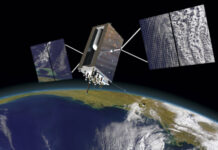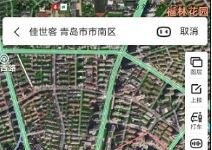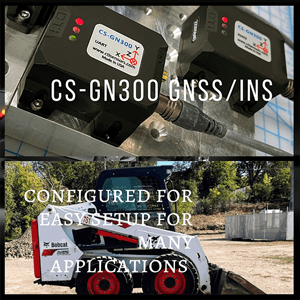When Testing High-Performance Positioning and Navigation Systems, Every Millimeter Counts
By Romain Zimmermann, Product Line Manager, Spirent Communications
Developers designing or integrating Global Navigation Satellite System (GNSS) receivers and other positioning, navigation, and timing (PNT) technologies face a fundamental question. How can you test such devices against the seemingly infinite variables they might encounter in the course of real-world operation, under the controlled and replicable conditions of the lab? The question isn’t new, but is perpetually challenging.
There is, of course, no better way to see how a GNSS-enabled device performs under live conditions than with live field testing. But even in scenarios where field testing is feasible (and not prohibitively expensive), it’s best reserved for the last verification stage of the product lifecycle. For earlier stages, especially when trying to identify performance problems, the real world is just too real. The variables that could affect device performance are practically infinite, making traceability—the ability to identify the source of errors or unexpected changes—extremely difficult. Controlling those variables enough, over enough replications to glean meaningful scientific insights, becomes practically impossible.
The only solution is to make laboratory testbeds more realistic. Fortunately, it’s now possible to conduct exceptionally lifelike, flexible testing using high-fidelity simulation and record and playback systems (RPS). These tools can test high-performance systems with far greater precision. And they can achieve reliable, replicable results to move products forward more quickly.
Having said this, record & playback systems represent a different approach – recording as much as possible of the real world, in as high definition as the system allows, for repeatable replay in the lab. For the next couple of sections, we’ll focus on the more versatile and more controllable simulation approach.
The Power of Realistic Simulation
Modern simulation tools enable controlled, replicable PNT testing across a vast and growing number of scenarios. From modeling hypersonic defense systems to seeing how autonomous vehicles respond to changing atmospheric conditions, it’s now possible to simulate just about anything. That includes highly accurate models of PNT signal transmitters (such as GNSS satellites and data), receivers (such as GNSS-enabled devices), physical environments, and vehicle structures and dynamics.
Of course, even the most realistic testbeds won’t reflect 100% of an end-user’s real-world experience. We can, however, get continually closer by incorporating ever-more accurate models of reality into lab testing. Modern simulation tools provide powerful capabilities to help you do it. They achieve highly realistic lab testing by performing several key functions:
· Faithfully replicating GNSS signals while preserving the ability to tightly control, repeat, and modify tests
· Maximizing replicability by assuring quality, consistency, and performance in testbed hardware and software
· Increasing fidelity of the synthetic environment by ensuring that simulation components mirror their real-world counterparts as closely as possible
· Supporting continuous model updates and open APIs to external models to enable more accurate simulations
· Providing accuracy an order of magnitude greater than the device under test (DUT), to ensure that errors or anomalies detected result from the DUT, not from the test equipment
Building Realistic Test Environments
Testbeds for PNT-enabled systems should provide the highest possible fidelity. But not all simulation equipment is created equal, and the differences aren’t always obvious when reviewing spec sheets. Be sure to carefully evaluate the following:
· Signal modeling: The first requirement for lifelike simulation is accurately recreating the signal architecture of GNSS or alternative PNT systems. This provides an essential baseline against which you can measure the impact of other factors on the DUT. Without highly accurate signal modeling, there’s no way to tell if anomalies or errors were caused by signal imprecision or the DUT.
· Satellite constellation modeling: Each GNSS or LEO PNT signal’s Interface Control Document (ICD) describes how the signal should be seen by a receiver, accounting for factors like atmospheric interference, clock bias, and ephemeris errors. But these factors can all change over time (such as when a new satellite is added to the constellation). Effective test equipment must therefore be able to continually incorporate ICD updates as they’re published.
· Local environment simulation: A huge number of local variables can affect the performance of PNT systems. To minimize the need for more expensive and time-consuming field testing and drive-testing, make sure that testbed tools can reproduce multipath signals and obscuration by various structures, and can simulate a wide range of interference effects.
· Vehicle modeling: Simulation tools should be able to realistically reproduce the motion and trajectory of the vehicle under test, as well as model the obscuration signature according to the positioning of the receiver on the vehicle.
Bringing Reality to the Lab with RPB
RF record and playback is often the most effective way to test against lifelike conditions in the lab. By recording actual PNT signals across multiple locations, developers can achieve a level of detail and richness close to reality, but with the ability to repeat with confidence.
Here again, the design of RPB tools can make a big difference in the reliability of the results they generate. When evaluating such solutions, be sure to consider:
· Dynamic range: RPB units should have enough dynamic range to pick up a range of signal strengths in noisy environments—especially important for receivers designed to filter out interference.
· Design and build: Low quality devices can introduce jitter into a recording, as a result of noise from their own internal components.
· Oscillator quality: In lower-quality RPB devices using temperature-compensated oscillators (TCXO), recordings and replays can prove to be inconsistent and unrepresentative. To avoid this issue, look for units with oven-controlled oscillators (OCXO).
Looking Ahead
As GNSS and other PNT systems support more performance-sensitive applications, the risk of millimeter-scale inaccuracies causing expensive, even catastrophic errors will only grow. Fortunately, the capabilities of simulation and RPB tools continue to grow as well.
By taking steps to bring more realistic simulation into the lab, developers can substantially reduce the risk of serious issues going undetected. Just as important, they can lower costsand accelerate time to market by finding issues at earlier stages in the product lifecycle, when they’re far less expensive to fix.



























